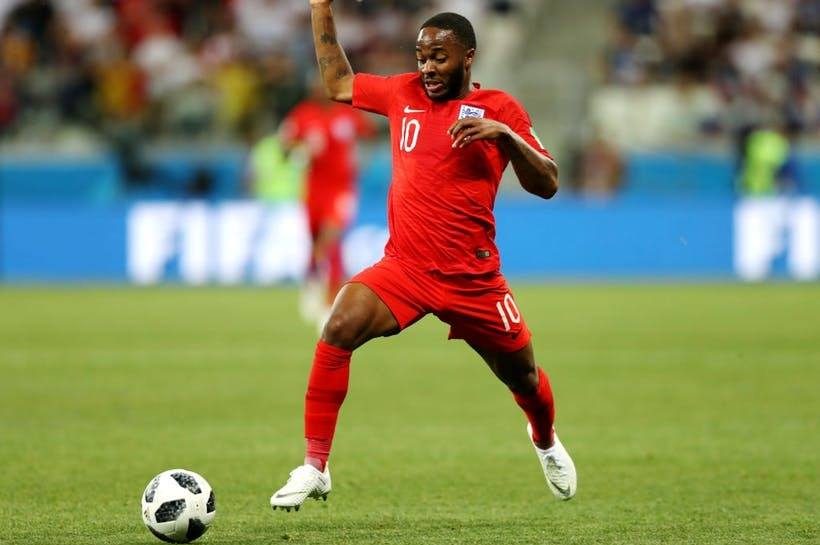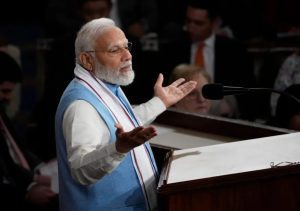England’s Raheem Sterling has underwhelmed so far at the World Cup. Off the pitch, however, he is winning new fans. The Manchester City winger’s essay blog, ‘It was all a dream’, tells the story of his father’s murder and his mother’s subsequent struggles to make ends meet. It’s brilliantly written, tugs at the heart strings and there’s a happy ending: Sterling, the ten-year-old boy who had to help his mother clean hotel toilets, now earns hundreds of thousands of pounds a week and is idolised by football fans the world over.
Sterling isn’t the only footballer recently to have shown a previously unknown talent for writing. His fellow Premier League player Romelu Lukaku’s article, ‘I’ve got some things to say’, follows the Sterling formula: it’s a readable, witty and emotional tale of rags to footballing riches. By the end, we learn that Lukaku’s mother, who couldn’t afford hot water or electricity when the Belgian striker was growing up, no longer has to worry: ’No more rats in the apartment. No more sleeping on the floor. No more stress. We’re good now. We’re good,’ he concludes, lyrically.
Both pieces have gone viral and the praise for each player has been unanimous. Gary Lineker called Sterling’s piece ‘wonderfully enlightening’; Piers Morgan said it showed a ‘different side’ to the footballer’s ‘flashy, cocky footballer image’. For Sterling, a footballer who is no stranger to controversy – and who came in for heavy criticism after it emerged he had an M16 assault rifle tattooed on his leg – it has done wonders for his reputation, elevating him above the muck the tabloids have been chucking at him.
The player stories are undoubtedly real. It does seem worth asking, though: did Sterling and Lukaku actually write their articles? The bylines on both blogs says so. But both these pieces appeared on a slick new website called the Players’ Tribune.
For English football fans, these articles are likely to be the first they might have heard of this site. Over in the United States, though, the website is already big business: it features heartfelt blogs from dozens of baseball, basketball and american football stars. The site’s stated aim, to ‘provide athletes with a platform to connect directly with their fans, in their own words’, explains its success. Fans are desperate to know more about their idols and the Players’ Tribune gives them what they want by showing a different, more personal side to footballers like Lukaku and Sterling.
But how authentic is the depiction it offers? According to the site’s executive editor, Sean Conboy, there is no one way in which an article on the site is created. Sometimes, he says, athletes have an idea for a piece; other times, they might write a draft themselves. But how much of the end product is the work of the person who ends up with their name on it?
‘Many times, athletes are in the middle of the season and they really want to get a story out. Our editors do what all editors do – ask questions, push for follow-up detail and figure out how to shape the piece in the most compelling way possible. Then our editors will put together a draft in the athlete’s own words. They can re-write, edit, or add any additional details they want. They have full approval, of course. They get to make sure everything is exactly how they want it’
When the Players’ Tribune was launched in 2014 by baseball player, Derek Jeter, the site came in for much scorn. Many doubted how a small start-up featuring a handful of players could succeed. Quickly, its critics were proven wrong; within twelve months, its status was confirmed when Kobe Bryant announced his retirement on the site. Several years on, its list of contributors is as eclectic as it is impressive: F1’s Fernando Alonso, golf’s Sergio Garcia, tennis’s Maria Sharapova all feature, as do many of the stars of this year’s football world cup: Argentina’s Angel Di Maria is something of a regular contributor, as is the Spanish centre-back Gerard Pique, who recently entered into a ‘partnership’ with the Tribune to expand the site’s presence in Europe.
This roll call of stars makes it no surprise that fans are flooding in: the site gets some 3.4million page views a month, according to ComScore. Of course, it isn’t only the names themselves that draw punters in, but the idea of hearing, in the players’ own words, something we might not have known about them. Sterling’s article does just that and, as a result, is now one of the site’s most successful ever articles, according to a spokesman for the site. But does the Players’ Tribune offer an authentic depiction, or simply one that the player themselves want to present? Is it journalism or PR?
For Sterling, who is no stranger to criticism on the front and back pages, it is understandable why he might want to retain some control in putting his own story across. Conboy says the site’s editors aim to ensure players ‘feel comfortable opening up and not worrying about being misunderstood or misinterpreted’.
But one thing is clear from looking through the Tribune: you won’t read an article that paints a player in a bad light; the writer always emerges favourably. The headlines on its pieces are inoffensive: take the former Brazilian player Ronaldinho’s ‘Letter to my younger self’; Di Maria’s ‘In the rain, in the cold, in the dark’; or German international Julian Draxler’s ‘The Garden’. In every case, the site’s long narratives – Sterling’s article is over 2,600 words – steer clear of controversy.
Some might say that the Tribune is the perfect antidote to scurrilous reporting that revels in such controversy: fallings out between players and managers, transfer rumours and gossip and the exposure of ‘love rat’ footballers on the front pages. Few would disagree that sometimes such reports do go too far; indeed Sterling himself was arguably a victim of just such an overreaction to his tattoo, which turned out to be a tribute to his murdered father.
But then again the tabloids are scurrilous for a reason: many players are hardly angels but you wouldn’t know that from reading the rags-to-riches narratives on offer at the Tribune.
So why can’t the Tribune and the tabloids exist in harmony?
The problem with the site is that it looks to be part of a new control freakery among highly-paid sports stars. Twitter, where any footballer you might have heard of has an account, has been a stepping stone along the path towards enabling big name players to cut out the media and speak directly to the fans. The Tribune is the logical next step, giving footballers a broader platform to expand their stories and reach out to fans.
Yet this media platform has mushroomed at the same time as clubs and agents have increasingly sought to guard and protect their stars from journalists. All too often now, players will be interviewed in-house by a club’s own media team rather than by potentially hostile reporters. Here soft-ball questions and platitudes from players – think ‘player x praises club’s team spirit’ – are the order of the day.
Even match reports aren’t immune to the blanket positivity: take this summing up on Chelsea’s website of their 3-0 defeat to Manchester City. The Daily Telegraph told its readers: ‘Chelsea, the champions, were utterly dominated, out-run, outdone by Manchester City’. But you might well have thought you had watched a different game if you read Chelsea’s own match report: ‘A Ramires goal incorrectly ruled out for offside with Man City a goal ahead changed the complexion of this early-season Premier League fixture’.
You won’t find bad writing like that on the Players’ Tribune. The worry for fans, though, is what websites and coverage with a vested interest in protecting a player – and a club’s – reputation is leaving out. It’s true that the Tribune does tell us something about a footballer that we might not have known. But there is no doubt that it’s a stylised, PR-positive portrayal. Raheem Sterling’s article might make us like him more, but the question remains: did he actually write his piece?


















